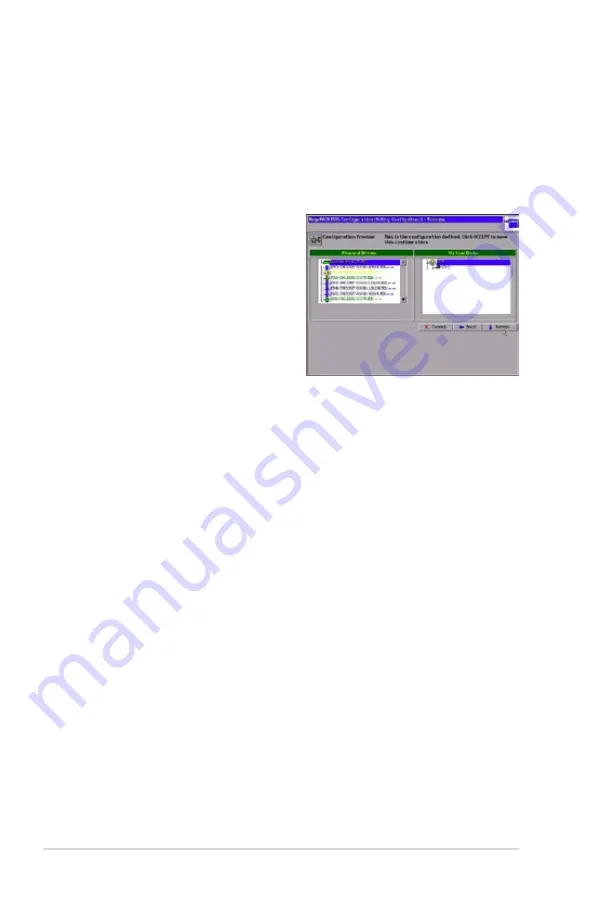
2-20
Chapter 2: RAID configuration
•
Select Size:
Specify the size of the virtual disk in megabytes. Normally,
this would be the full size for RAID 6 shown in the Configuration Panel
on the right. You may specify a smaller size if you want to create other
virtual disks on the same disk group.
6. Click
Accept
to accept the changes to the virtual disk definition, or click
Back
to return to the previous settings.
7. Click
Next
when you are finished
defining virtual disks.
The configuration preview screen
appears, as shown in the right
figure.
8. Check the information in the
configuration preview.
9. If the virtual disk configuration is
acceptable, click
Accept
to save
the configuration. Otherwise, click
Cancel
to end the operation and return to the WebBIOS main menu, or click
Back
to return to the previous screens and change the configuration.
10. If you accept the configuration, click
Yes
at the prompt to save the
configuration.
The WebBIOS main menu appears.
Using Custom Configuration: RAID 10
RAID 10, a combination of RAID 1 and RAID 0, has mirrored drives. It breaks up
data into smaller blocks, then stripes the blocks of data to each RAID 1 disk group.
Each RAID 1 disk group then duplicates its data to its other drive. The size of each
block is determined by the strip size parameter. RAID 10 can sustain one drive
failure in each array while maintaining data integrity.
RAID 10 provides both high data transfer rates and complete data redundancy.
It works best for data storage that must have 100 percent redundancy of RAID 1
(mirrored arrays) and that also needs the enhanced I/O performance of RAID 0
(striped arrays); it works well for medium-sized databases or any environment that
requires a higher degree of fault tolerance and moderate to medium capacity.
When you select
Custom Configuration
and click
Next
, the Disk Group Definition
screen appears.
You use the Disk Group Definition screen to select physical drives to create disk
groups (arrays).
1. Hold <Ctrl> while selecting two ready physical drives in the Physical Drives
window on the left.






























